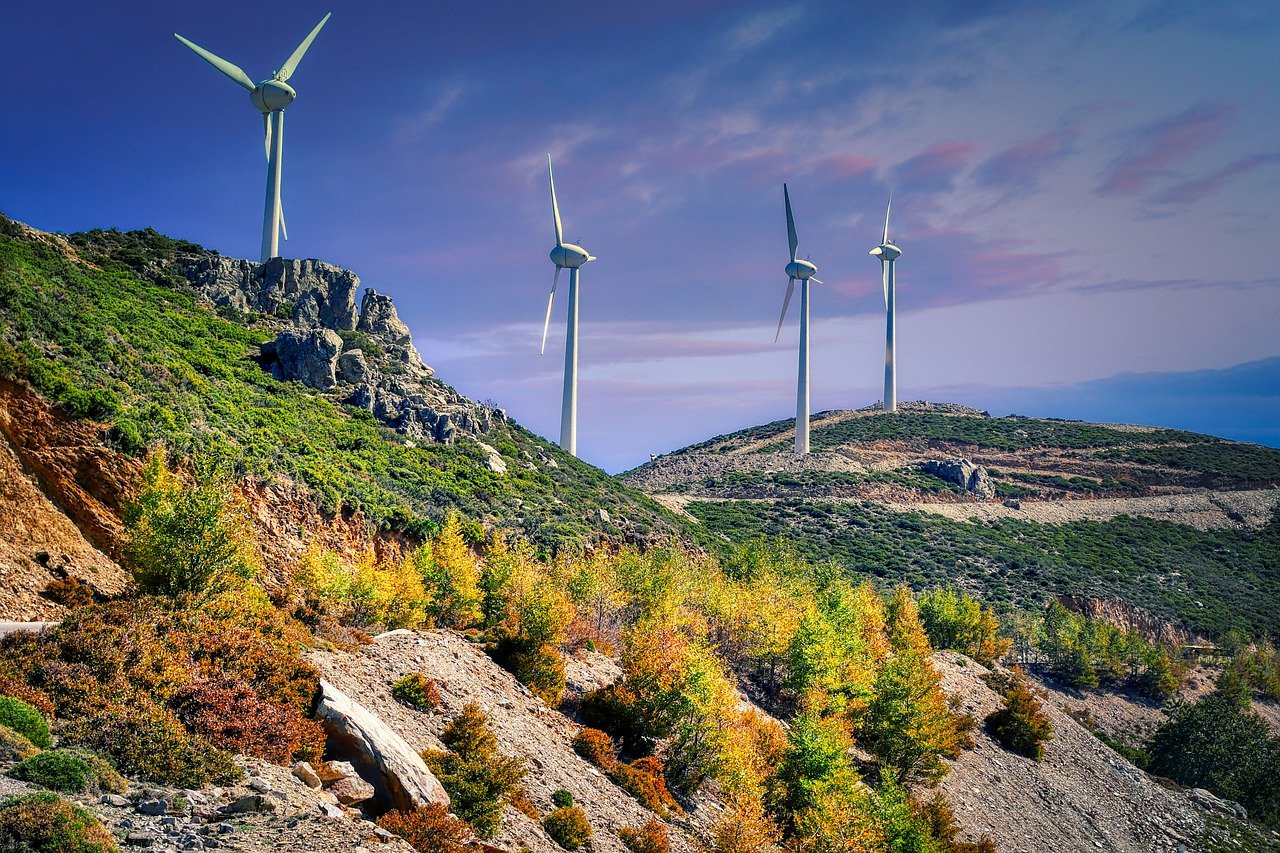The Nearness of Wind
What do you think of when you hear the wind blow? Or see clouds flying across the sky? If you ask most people about capturing the power of wind, they picture a towering wind turbine. In fact, the clean energy industry may be missing out on an oft-ignored resource: low-lying winds.
 Reintroducing H-type turbines
Reintroducing H-type turbines
H-type turbines are compact, ground-level wind turbines that have been around for decades. By placing these relatively short turbines in the "understory" of tall turbines, an estimated 20 percent of wind farms can profitably capture the energy of near-ground winds.
Traditional turbines do not do well in turbulent conditions. Gusts shake the blades that attach to these turbines' horizontally-aligned drivetrains. Shaking causes the bearings in the drive shafts and generators to wear out; repairing these can be hugely expensive. Thus, propeller-type turbines are placed far apart from one another and high above the near-ground turbulent wind layer so that they realize smooth, laminar wind flow through the entire sweep of their long blades.
H-type turbines, with their two or more arms connecting to each blade and vertically-aligned drive trains, are inherently able to do well in turbulence. Siting these vertically-spinning turbines as close as a few feet apart from one another produces what is known as the Coupled Vortex Effect: the wind speeds up in the gap, creating more lift on the neighboring blades while the vortexes in the wake lower the pressure downwind, accelerating the wind through the entire rotor. With this, the density of energy production from wind-rich land can increase significantly. As a result, wind farms have the potential to expand renewable energy and lower the cost of electricity.
Though H-type prototypes are not new, validation of their design concepts is http://new. Aeroelastic models are now able to predict fatigue, harmonic frequencies, structural integrity, and the aerodynamics of these turbines. And, thanks to a grant from the California Energy Commission, computer modeling also reveals how well the Coupled Vortex Effect compensates for the problem of drag from vertically-aligned turbines.
Adding to the logic of developing the understory is research by several professors, including Drs. John Dabiri of Caltech and Marius Parschivoiu of Concordia University. Their studies show that pairs of closely spaced, compact H-type turbines can cause fast-moving, higher altitude winds to flow downward and nearer to the ground. The energy in the wind is measured as the cube of the wind speed, so even small increases in speed through tall turbine rotors create a marked rise in energy output. The result: more energy and greater efficiency.
By precisely placing H-type turbines in the shadows of traditional wind turbines, the models indicate that fields of them will be able to produce a lot more energy than previously thought possible from windy lands.

For example, advanced computer software was used to estimate near-ground wind speeds in 40 percent of the wind farms around the world. Based on extrapolating the results to all the wind farms, an estimated 100,000 megawatts of existing wind farms will have average annual wind speeds between 15 and 20 miles per hour, at 30-80 feet above the ground. Pairs of H-type turbines in these locations should realize 30-50 percent capacity factors; and double or more the energy output from these properties.
Because existing wind farms are already zoned for turbines with access roads, fencing, and other infrastructure in place, adding an understory of H-type turbines will realize much lower costs than projects built on raw land. This is especially true if near-ground turbines come with batteries, so the wind farm's substation and transmission lines d o not have to increase in capacity and size.
o not have to increase in capacity and size.
Economies of scale will also lower manufacturing and installation costs for H-type turbines. As a result, supply chains will become more competitive, while advances in technology will continue to make wind power more affordable. Building out existing wind farms will also become less expensive as construction costs and up-front expenses decline. Reductions in balance-of-plant costs on a per megawatt basis will become clear. These trends will expand, as H-type turbines go from pilot projects to full-scale deployment among all wind farms with an ample supply of near-ground winds. All of these things are not only doable, but practical in the short-term.
From tax collectors to wind farm owners and operators to entrepreneurs, building out the understory of wind farms offers a windfall (pun intended) for everyone. Both public and private institutions can benefit from this new and profitable source of energy; benefits that are all the more important right now, as the industry continues to struggle with the economic challenges of COVID-19.
We would be remiss if we were to delay this opportunity to deliver a new source of reliable, clean, inexpensive, and renewable energy. The good we can do is considerable.
The winds of renewal are real, impressive, and accessible. For these reasons, we choose to champion a cause that is beneficial to all and harmful to none. We choose to seize the high ground by gathering the rewards nearer to the ground. We choose to direct our energy at harvesting near-ground winds.
Kevin Wolf is CEO and a cofounder of Wind Harvest, which designs turbines that can use highly energetic near-ground wind.
WindHarvest | windharvest.com
Author: Kevin Wolf
Volume: 2021 January/February








